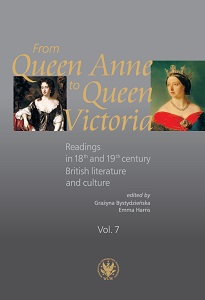Figures of Hypocrisy
Figures of Hypocrisy
Pity and Poverty in Charles Dickens’s "Hard Times"
Author(s): Przemysław Uściński
Subject(s): Theoretical Linguistics, Applied Linguistics, Studies of Literature, Philology, History of Art, British Literature
Published by: Wydawnictwa Uniwersytetu Warszawskiego
Keywords: Charles Dickens; Utilitarianism; hypocrisy; pity; poverty; metonymy; parody; allegory
Summary/Abstract: In Charles Dickens’s "Hard Times" (1854), the discourse of facts and figures is exposed as a mask of narrow-minded utilitarianism that promotes a morality blind to anything but statistical data. Parody and multi-layered irony allow Dickens to expose such reductive logic as hypocritical, demonstrating how the novel’s villains discredit charity and pity as unsound only to replace them with a pseudo-scientific reverence for practicality. This article examines the textual devices through which Dickens exposes such hypocrisy, also by looking at the intertextual references in the novel and some earlier satirical writings about hypocrisy, which often link this vice with pity (as William Blake so frequently does), and with the response to poverty (as in the case of, for instance, Henry Fielding and Percy Bysshe Shelley). It also discusses the aesthetics of the novel in terms of its use of metonymy and allegory, which help Dickens to build a grim, fable-like narrative that challenges the reductive worship of utility and appreciates the value of kindness and compassion.
- Page Range: 201-214
- Page Count: 14
- Publication Year: 2021
- Language: English
- Content File-PDF

